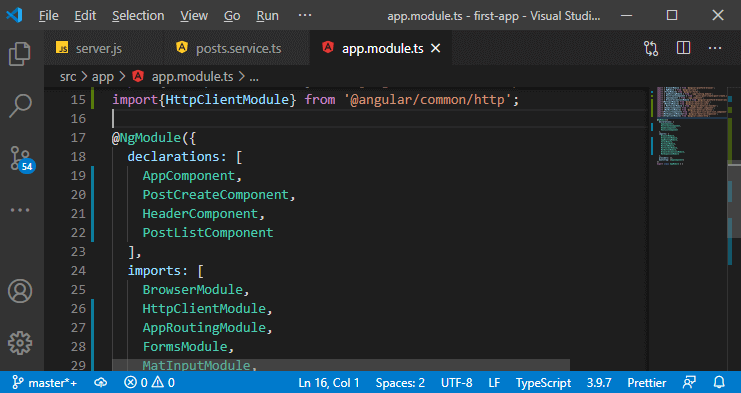

- #Angular http client post how to#
- #Angular http client post install#
- #Angular http client post code#
- #Angular http client post download#

The HTTP client service offers the following major features.

We can utilize either the XMLHttpRequest interface or the fetch() API to communicate with backend servers. REST APIs are used by front-end applications written using frameworks such as Angular to communicate with backend servers. We will learn all these in this Tutorial. The Response from the HttpClient is observable, hence it needs to be Subscribed. The HTTP Client makes use of the RxJs Observables. This new API is available in package angular/common/http. We demonstrated how to send GET requests to REST API servers from inside your Angular 13 application, and we looked at how to utilize HttpClient, Angular services, RxJS Observables, models, and the async pipe, among other things. The Angular HTTP client module is introduced in the Angular 4.3. GET sends data in URL to server for getting data from a resource.
#Angular http client post code#
You can find the complete source code of this demo in GitHub. You are sending parameters in the request body which is what is expected here. In Angular, we achieve the server communication channel through the HttpClientModule API service. If this is your first time working with the Angular CLI, just open your terminal and enter the following command to create a project: Angular applications are data-centric, which needs to connect with a server to store and fetch data.
#Angular http client post install#
Angular CLI 13 (You can install it from npm using: npm install -g also need to generate an Angular 13 project to complete the task.

You can install both from the official website. You must have the following tools installed on your development system in order to work properly: This module is already included in the application when we create the application in Angular.
#Angular http client post download#
Hc thì phi i ôi vi hành phi không nào Hôm nay mình s tip tc i tip vi Http Options và Demo 1 tính nng ó là UPLOAD AND DOWNLOAD FILE WITH PROGRESS nhé. Next, open in your text editor and import the angular HTTP client. Trong bài trc, mình ã gii thiu s qua v HttpClientModule và nhng ng dng thit yu ca nó. Now head over to your Angular application root directory by running the following command: cd my-app & ng start // starts angular application.


 0 kommentar(er)
0 kommentar(er)
